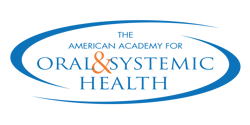Oral Cancer: What You Don't Know Can Kill You
Ask almost anyone in the US if they know what the self breast examination is, how it is done, and what one is looking for when doing it and, more than likely, they will answer with a resounding "YES"—both men and women. Now ask those same people if they have similar knowledge for oral cancer, they will answer with a resounding "NO."
The little known statistics surrounding oral cancer are frightening.
For so many years, oral cancer remains a major and growing health risk factor for our population, yet it flies below the radar of most Americans.
Take, for example, these compelling facts:
- Every hour, of every day, of every week, of every month, of every year someone dies from oral cancer in the US alone. Yes, you read this right. Once every 60 minutes, someone in our country dies as a result of oral cancer.
- Out of 100 people diagnosed with oral cancer today, only half of them or 50%, on average, will be alive in 5 years—a worse statistic than almost all of the most commonly occurring cancers and a statistic that has not changed for 40-50 years.
- Two-thirds of all oral cancers are discovered in a late stage so the surgery/treatments are oftentimes disfiguring and debilitating
- Human Papilloma Virus (HPV), the orally sexually transmitted virus that is directly associated with 70-85% of all cervical cancers, is causing an explosion in the incidence of oral cancer as well. Due to HPV, we now are seeing oral cancer in a much younger population. Gone are the days that we look to only tobacco and alcohol plus family history as the common risk factors for oral cancer, which now affects women at an equal rate as men.
What can we do to save our own lives and the lives of those around us?
Oral cancer is a silent killer. Most of the time, it is not painful. By the time we notice that an area is annoying or painful, it is significantly involved.
So what do we do?
Like with breast cancer, early detection is critical to saving lives. Self-awareness is also critical to saving lives…saving your own life. What do we look for in the self-examination? Let’s take a moment to review what we all must be looking for to save our own lives through early/self detection.
- Look for a red patch, white patch, lump/bump/swelling that does not go away for two to three weeks. If an area of abnormality remains that long, seek the advice of your dentist immediately
- Examine your own mouth frequently enough that you know your own ‘normal.; Make a point to look at
- The sides of your tongue
- Your lips and the insides of your cheeks
- Way back into the back of your throat as far as you can see
- Lift up your tongue and look at that part of your mouth under your tongue
- Seek routine care by a dentist in your area.
My challenge to you
I challenge you, starting today: Become a part of a nationwide effort to save lives through reducing your own personal risk factors for oral cancer, heightening your awareness of what is normal and abnormal in your own mouth, and seeking routine dental care—because the life you save may be your own!
Dr. Jonathan A. Bregman is a speaker, author, and consultant.
www.bregmanconsulting.com
www.endoralcancer.com
